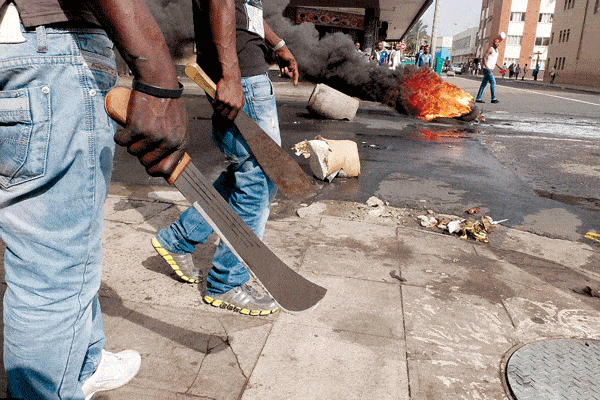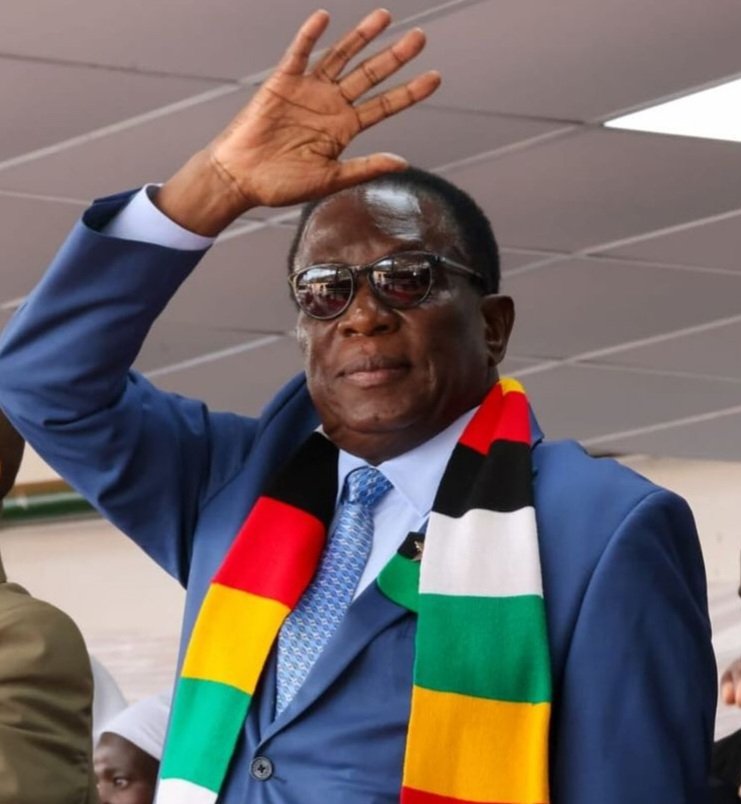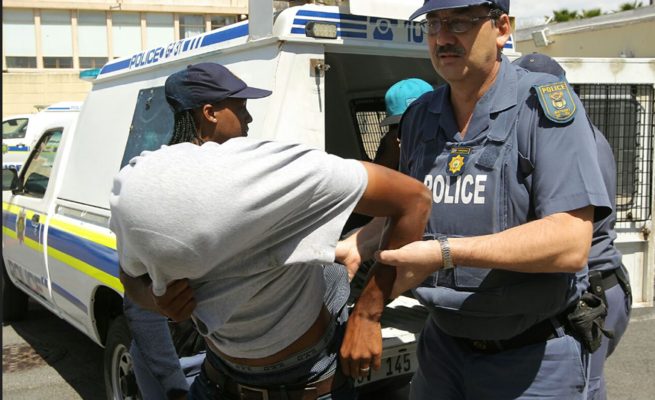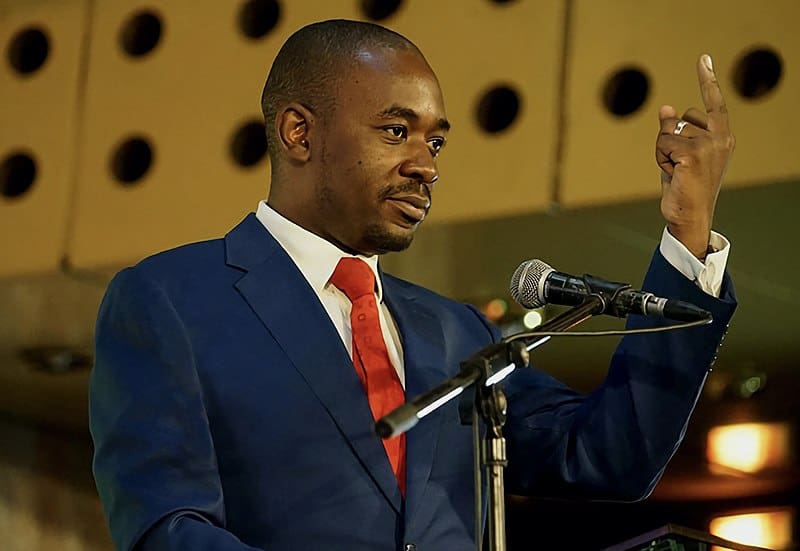By Alex T. Magaisa
The way it used to be
Twenty years ago, a Tanzanian colleague I met at college in England was effusive in his praise of Zimbabwe’s urban areas. He had visited the country a few years before in the mid-nineties as part of a study into urban planning and development. He was impressed by the fact that the rules were enforced and there was order.
I found it difficult to imagine what he saw as special in that. Was that not the norm everywhere? Several African colleagues agreed with him as they shared “horror” stories from their own countries. The systems, apparently, had broken down. Later, as I watched African movies and saw mansions in areas that showed no signs of being serviced for housing development, I understood my colleagues’ narratives.
The common denominator in their stories was corruption which thrived on population pressures in urban areas and increasing desperation for land. The moment public officials who were responsible for allocating land realised there was lots of money to be made, they began to cut corners. Old systems that were built on formalism and order were soon discarded, making way for disorder.
Although I felt proud that things were working compared to our peers, deep down I also harboured some worries. I feared that we were travelling a well-trodden path, although my colleagues were not familiar with the nuances of what was going on in Zimbabwe. After all, most of them had a romanticized view of our then leader, Robert Mugabe.
In the early 2000s, the signs were already ominous. Major cities like Harare and Bulawayo were already facing long waiting lists of people seeking housing stands. There were already cases of corruption in the allocation of urban land. The high rate of rural to urban migration was imposing huge pressures on urban infrastructure. The cities were taking in more people than they could accommodate.
Twenty-eight years ago, when the Reverend Ndabaningi Sithole offered his Churu Farm to home-seekers, thousands of Harare residents flocked to set up homes. However, the government was not impressed by the opposition leader’s offer and moved in to evict nearly 20,000 people who had settled there.
Twenty years after our conversation, my Tanzanian colleague would probably be taken aback by how things turned out in Zimbabwe. He might be surprised by images of bulldozers demolishing homes in Harare and wonder what happened to the formal system which was defined by impeccable order and observance of rules. The problem, in part, is that Zimbabwe did not learn anything from its African peers that had travelled the path before it. If it did, it had only learnt to make the same errors.
Binary Discourse
This week, there has been a flurry of accusations and counter-accusations as bulldozers have once again been unleashed to demolish homes in parts of Harare. That these demolitions are taking place during the wet season when Harare is receiving heavy rains has only made the picture worse.
As with most things Zimbabwean, the debate is couched in political terms, and the discourse is framed in the binary of either ZANU PF or the MDC Alliance, the two largest political parties. ZANU PF says it is the MDC Alliance’s problem, while the MDC Alliance counter-argues that it is ZANU PF’s doing.
This discourse is informed by the structure of urban governance in Zimbabwe, which is a battleground between the two political adversaries. While ZANU PF controls the central government, the MDC Alliance has electoral control of urban areas.
ZANU PF has the parliamentary majority, while with at least 28 out of 32 urban local authorities at the last election, the MDC Alliance has the urban majority. However, as demonstrated in a recent BSR, this picture presented by electoral outcomes is highly misleading because the legal architecture is designed in such a way that local government is controlled by the central government. This means ZANU PF has control of urban councils as well, a point which will become more apparent in this article.
One of the most significant government ministries is the Ministry of Local Government and Public Works. Under the Urban Councils Act, urban councils are essentially under the thumb of the Minister. For example, the Minister can override a resolution of the council. Additionally, the Mayor is ceremonial – he is a figurehead with a title and large robes but no executive power.
The Mayor and his fellow councillors cannot even appoint the senior executives of their councils. Instead, these senior executives are appointed by the Local Government Board, which in turn is appointed by the Minister.
The outcome is that even if the MDC Alliance might not wish to admit it publicly, it has no power to run the councils in which they have an electoral majority. This why I said in the previous BSR that for the MDC Alliance, it is a case of responsibility without power. The idea of MDC-run councils is, upon critical analysis, essentially one of the great frauds in the political system.
The Elected and Unelected Layers
To further illustrate who really exercises power in urban councils, it is important to unpack the structure of urban councils. The governance structure in councils has two layers: the elected layer and the unelected layer. It is important to understand the distinction between these two layers which on the face of it appear to be a united front. After all, whatever one layer does is regarded as having been done by the “council”.
The elected layer comprises councillors who are elected by voters at every general election. These councillors get together at their first meeting to elect a mayor from among them. As I have stated, this mayor is ceremonial. He has no executive powers.
ZANU PF abolished the executive mayorship in 2008 when it realised it was inconvenient because it was creating an alternative centre of power which was controlled by the opposition.
It is this elected layer of the council that is visible to the public, which explains why responsibility for what happens is often ascribed to the MDC-run council. The opposition likes to claim political credit for controlling the electoral majority because it makes good political headlines.
But as we have already observed, the council has very little power considering the powers that are given to the Minister of Local Government who operates as the overlord.
The unelected layer of urban governance is, ironically, the more powerful of the two. It includes the senior executives of the council. They are headed by the Town Clerk, who is effectively the CEO of the urban council. Others are heads of departments such as the director of works and the health director. This is the layer that has executive power.
They run the daily affairs of the council. Unlike councillors, their terms of office are not dependent on elections. Instead, they are dependent on their appointing authority.
The appointing authority is the Minister of Local Government and Public Works who controls the Local Government Board. Even if an acting senior executive is appointed by the Mayor to hold the fort pending a substantive appointment, the Mayor’s choices are restricted to the existing pool of candidates, all of them approved by ZANU PF controlled Local Government Board. If he brings in any new candidate, he will be blocked. Their wages and conditions of service are also approved by the same authorities. As the adage goes, he who pays the piper calls the tune.
Between the unelected executives who wield executive power and the elected layer who have ceremonial powers, it is the former who are largely in charge.
The net effect is that when the senior council executives faced with a choice between what the councillors want and what the Minister wants, there is really no contest. The senior executives will generally sway in favour of the Minister and central government.
Nevertheless, whatever the senior executives do is never in the name of the Minister or the central government. It is always in the name of the council. Therefore, when they litigate, they do so as the City of Harare or the City of Bulawayo. When they execute judgments, they do so as the City of Harare or the City of Bulawayo.
The Minister and the central government are never visible, even though they are ever-present in the background, pulling the strings and controlling the senior executives. This gives a misleading impression because the public does not see what is happening behind the veil of the council.
Moral Dilemma
The situation of illegal structures presents a moral dilemma for the council: on the one hand, an order to evict residents because the house is an illegal structure looks callous considering the effort and resources invested in building it. But on the other hand, allowing the house to remain creates a moral hazard because it encourages others to defy the law.
There are sound public policy reasons for proper urban planning rules and their enforcement. They include environmental and public health considerations. If the council is lenient on illegal structures, others will take it as a licence for illegality. This is not in the public interest. Therefore, it is difficult to fault a council for enforcing these rules.
Indeed, they would be a target for severe criticism if they failed to enforce the rules. Yet this enforcement of rules should be done with reasonable use of discretion. The hammer is not the solution to every problem.
In the present cases, the council obtained court orders of eviction in 2016 and 2017. The council could have enforced those orders 3-4 years ago. This would not have been any better and the council would still have been criticized.
However, the council did not act at the time. It is not clear why the council did not act but there are at least two possible reasons: the first which is generous, is that the council exercised forbearance.
In other words, it chose not to exercise the legal power that it had because it was good to hold back. As I have stated, this is a benign interpretation of the council’s approach but it is probably too generous.
The second reason is that there was no cooperation from the apparatus of force to implement the court orders. Even if the council wanted to enforce the court orders, it could not do so without the cooperation of the central government which controls the police and other agencies necessary to carry out the orders.
Perhaps the Minister of Local Government and related authorities had no interest in carrying out the evictions. The court orders were meaningless without ZANU PF’s support to enforce them.
This moratorium was part of the problem. It may have given a false sense of security to residents that they were protected by their political godfathers.
It may even have encouraged them and others who had not yet started building to go on and build on allocated stands, the illegalities notwithstanding. The lack of enforcement encouraged more illegality because it gave a misleading sense of security.
This brings us to the current situation.
It is evident that the eviction orders from 3-4 years ago have been activated because it is politically beneficial to do so for those who are behind the evictions.
Intriguingly, now that the inhumane enforcement of the orders has sparked public outrage, none of the parties wants to take responsibility for it.
Hand of the central government
However, the unmistakable hand of the central government is evident in the evictions. To see it, one must look beyond the apparent picture presented by the documents and into the conduct of the parties.
One need not look further than the social media footprint of Nick Mangwana, the Secretary for Information and Publicity, who is the government’s spokesperson.
On 13 November 2020, he tweeted as follows:
“Expect demolitions of illegal structures, arrests of illegal vendors, land barons, sand and water poachers … Lawlessness is being clamped on” (sic) he wrote on Twitter, the micro-blogging social media platform.
Mangwana speaks on behalf of the central government, not the council. The warning of impending evictions was issued because he knew what the central government was planning. The demolitions have indeed happened, true to his warning.
If the government was aware that there would be demolitions and was warning residents, it means it did not disapprove of them because it was doing nothing to stop them. If anything, the tone of Mangwana’s statement was that of someone who was merely declaring a fait accompli.
When Mangwana says “Lawlessness is being clamped on” he is making an assertion of raw power accompanied by a justificatory tone that it is the right thing to do. Mangwana was preparing the government’s defence against any outcries of wrongfulness.
If indeed, the government did not approve of the evictions, the Minister of Local Government could easily have stopped them because he has the power to override the council. However, of course, this was not the elected layer of the council’s doing. This was the work of the unelected layer of the council, working together with the central government.
After all, the ceremonial Mayor of Harare, Jacob Mafume was detained at remand prison when the moves to commence the evictions started. It is also as if the arrest and detention were designed to get Mafume out of the way, enabling the unelected layer of power at Town House to dust up the court orders that had been kept unused for 3-4 years to carry out the evictions.
This is a typical case of responsibility without power and power without responsibility: the elected layer of the council is given responsibility for the evictions over which they have no power beyond the orders they obtained 3-4 years ago.
On the other hand, ZANU PF, which has power through the unelected layer of the council instigates the evictions process without taking any responsibility for it.
This is why Mangwana smugly posts the eviction order showing the plaintiff as the City of Harare, a circumstance that obscures the distinction between the elected and unelected layer of the council. It hides the fact that the ZANU PF regime uses the unelected layer of the council, which is beyond the control of the MDC Alliance to carry out the evictions.
The hand of ZANU PF is also evident in the use of the apparatuses of force to carry out the evictions. It is common knowledge that the police and other instruments of coercion generally act at the direction and in the interests of ZANU PF.
An MDC Alliance run council does not have the power to command the police to carry out such large-scale operations. Whenever the coercive apparatus of the State is used, it is because ZANU PF and the government approve of it.
Commission of Inquiry
In addition, although the government does not want to admit it publicly, these evictions are probably also informed by the results of a commission of inquiry into urban land sales which was chaired by Justice Tendai Uchena, a Supreme Court judge.
This commission started work in February 2018 and presented its report in December 2019. It found large-scale corruption in urban land dealings leading to illegal settlements.
It recommended the prosecution of several land barons as well as regularisation of the illegal land settlements. Kudakwashe Manjonjo provides an excellent summary of the report which gives context to the current demolitions.
Intriguingly, the full report of the Uchena Commission has never been made public by President Mnangagwa. Why it is being kept a secret is anybody’s guess.
But it is not unreasonable to imagine that it contains details that are too embarrassing to be made public. If the report implicated members of the opposition and other rivals, Mnangagwa would have gleefully published it for the whole world to read.
Who is Mnangagwa protecting by keeping the report hidden in the vaults of Munhumutapa Building? It joins an inglorious list of reports, such as the Chihambakwe and Dumbutshena commissions which have never seen the light of day.
The secrecy leaves room for selective implementation of recommendations and targeting of small actors. The big fish are protected. In October 2020, state media began making noises about arrests of land barons suggesting the government was implementing some of the Uchena report recommendations.
It is within this context that the latest round of evictions is being done. However, because of the outrage, it is attracting, the regime does not want to be associated with it. Nevertheless, the unrestrained Mangwana had in his over-excitement given the game away when he tweeted on 13 November.
It’s a government scheme that has gone wrong, which they now wish to ascribe to the “MDC-run council” even though it started when the regime had the Mayor in detention. It is ridiculous to blame the Mayor when they themselves had removed him from the scene of the crime by arresting and detaining him.
What’s to be done?
When all is said and done, the authorities must deal with the critical question of how to remedy wrongs arising from illegal settlements. I have explained why it is in the public interest to have proper town planning rules and to enforce them. Urban councils would be neglecting their functions if they did not enforce these rules.
At the same time, timing and methods of remedying wrongs require serious consideration.
I imagine that most reasonable people would agree that a blanket approach of demolitions is too blunt, insensitive, and unfair on residents who are sometimes victims of manipulation by land barons who prey on their desperation. There are certain zones where there should be zero tolerance to any buildings, such as wetlands.
In such cases, evictions may be regarded as not only legitimate but prudent and necessary. However, in other areas where it is possible to regularise settlement, this can be done in combination with sanctions that may include penalties. In other words, the authorities should take a more nuanced approach to deal with the problem of illegal structures.
It has been said that a man who is armed with a hammer thinks every problem is a nail. This is how the authorities are dealing with the illegalities in urban settlements. The bulldozer is seen as the sole tool.
As it is, the demolitions are resulting in more problems on top of existing ones. There is already a problem of homelessness and the government is adding to the problem, not solving it.
It is not an exaggeration to say that the government is burning the house down to kill a snake. The government should be targeting the source of the problem: namely the corruption that involves so-called land barons. These land barons should be held to account.
They must be made to pay compensation to residents who have lost their homes on account of the evictions. For their part, human rights lawyers do a fantastic job defending people facing evictions.
However, public interest litigation ought to be extended to demand compensation from the land barons who duped people into investing in these fraudulent schemes.
If the government is serious about cleaning up illegality and corruption over urban land it must publish the full report of the Justice Uchena Commission.
For their part, Zimbabweans must demand it. But you can only demand what you know. I would not be surprised if this is the first time that some Zimbabwean readers are finding out that there is such a report.
We like to think of ourselves as a highly literate nation. I often lament that this is a misleading image that has led us down the path of complacency.
We can read alright, but oft-times we miss the things that are right in front of our eyes. The media, civil society, opposition parties, and members of the public should all be making serious noise demanding the full report. But there is a wall of silence, which of course, gives plenty of comfort to the government.
WaMagaisa














